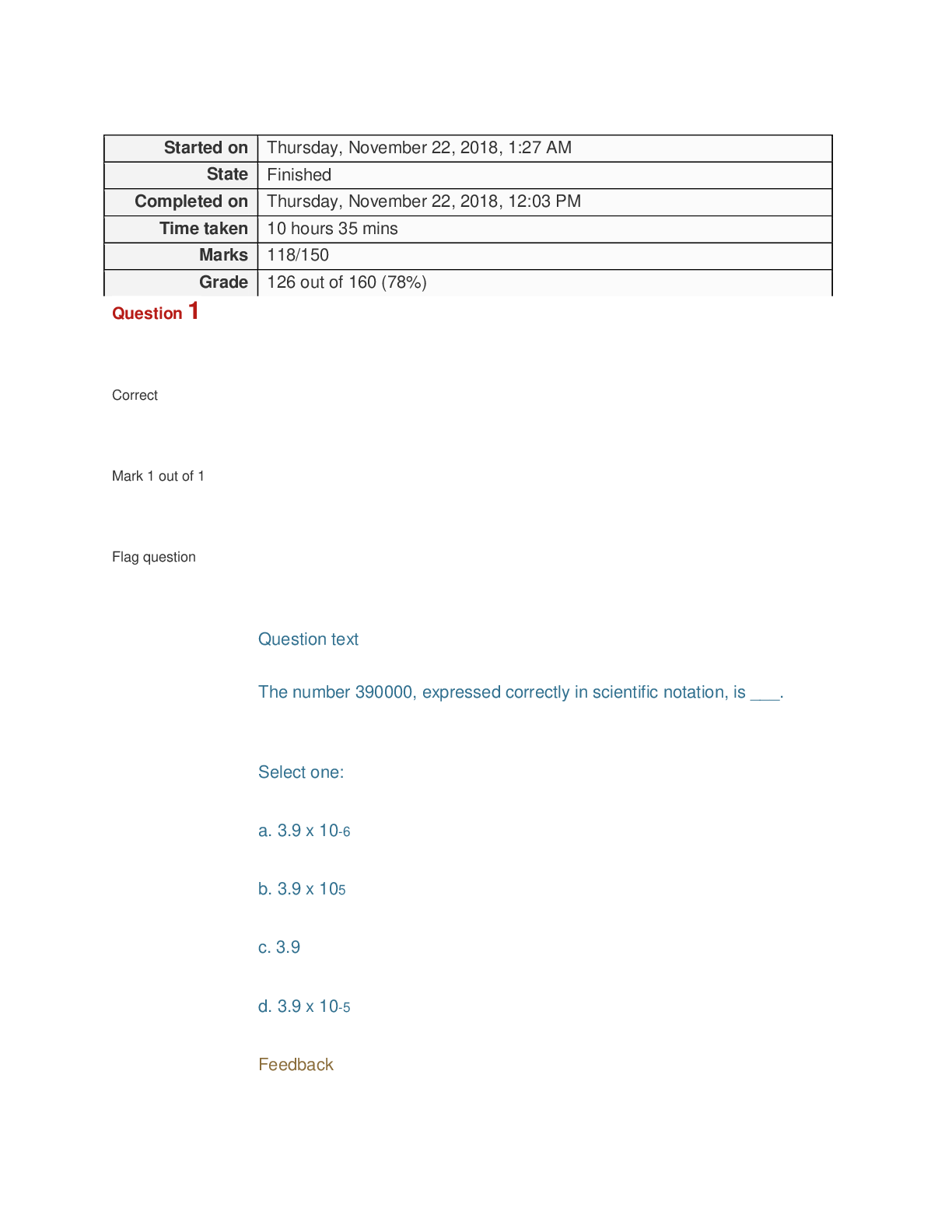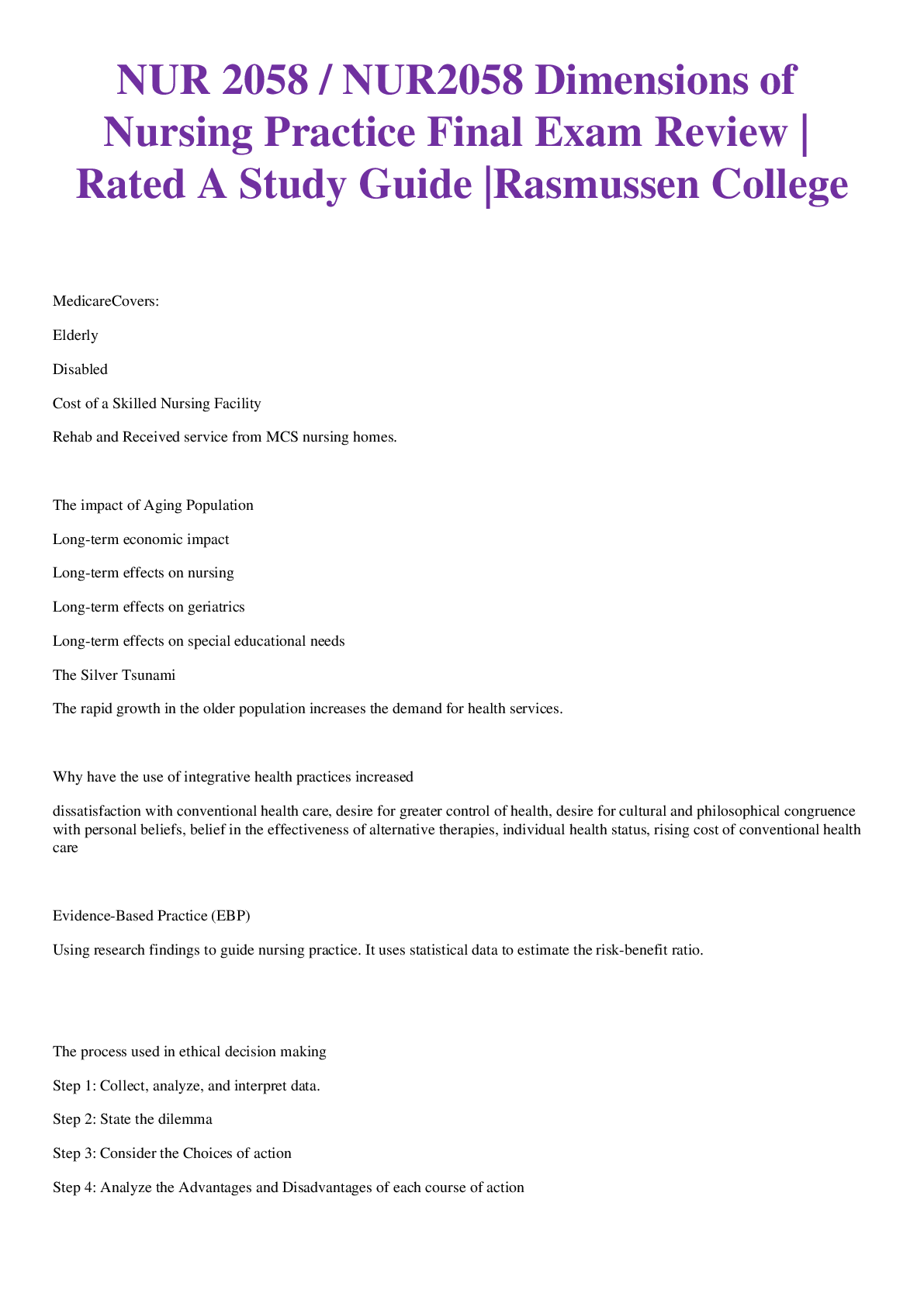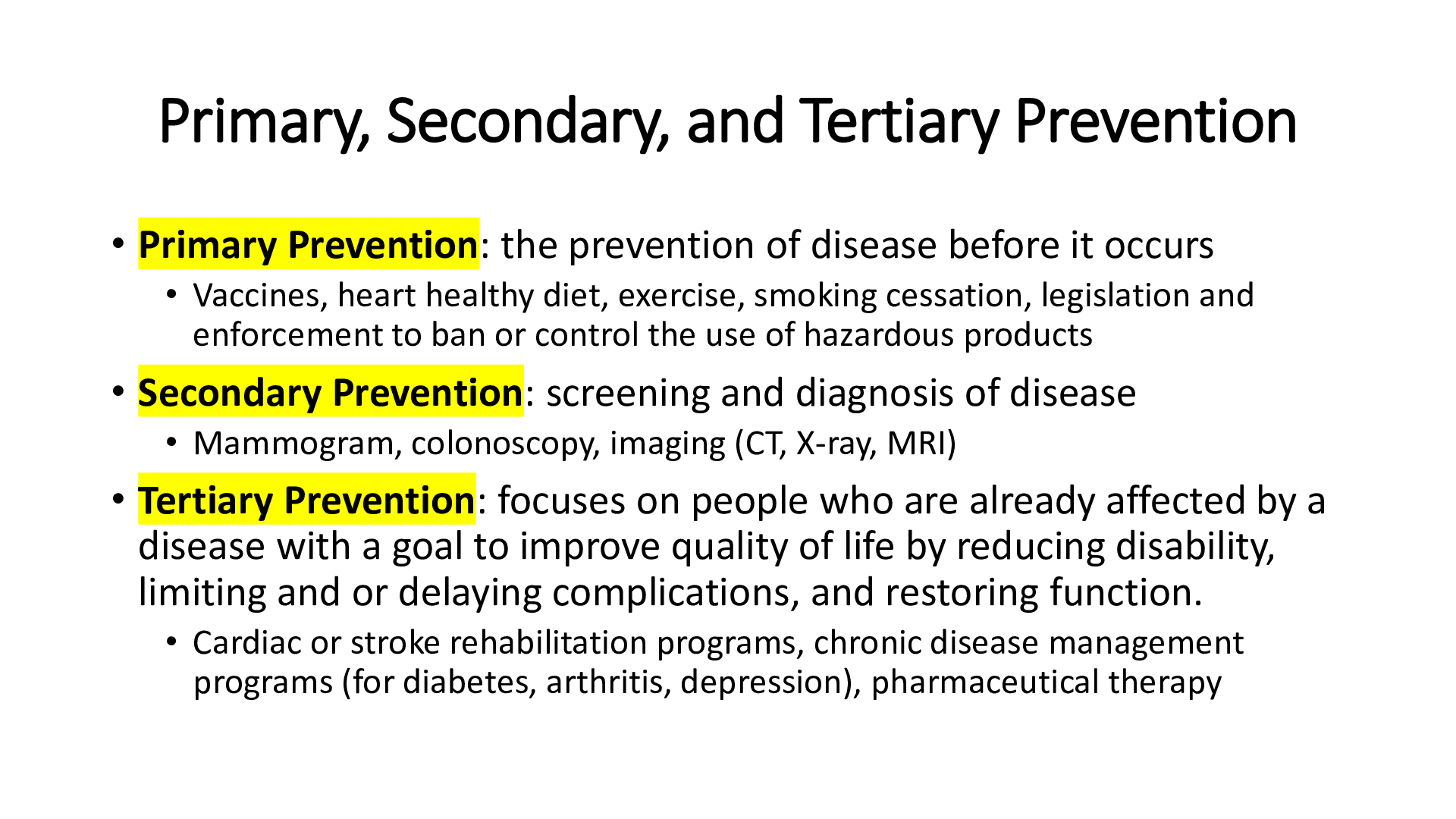*NURSING > EXAM REVIEW > NUR 2349 / NUR2349: Professional Nursing I / PN 1 Exam 3 Review . Rasmussen (All)
NUR 2349 / NUR2349: Professional Nursing I / PN 1 Exam 3 Review . Rasmussen
Document Content and Description Below
NUR 2349 Professional Nursing I PN1 Exam 3 1. The first leukocytes attracted to an injured tissue are the Neutrophils 2. Fever that is seen in a client with an infectious disease i... s most likely caused by 3. Chronic inflammation can be caused by all of these 4. A nurse teaching strategy to reduce the development of antibiotic-resistant organisms is 5. A client with a known infection must be managed by using which identified method of precaution 6. All of the following are risk factors for delayed wound healing 7. In healing by primary intention, the wound fills in from 8. If a client has been taking a steroid drug wound healing will be delayed because the steroid drug 9. Rest and immobilization are important to wound healing because 10. Parents report their six-month-old daughter has diarrhea and vomiting for 24 hours which assessment finding do you expect to find that suggests fluid volume deficit 11. A priority assessment for client with fluid volume excess is 12. The cephalic vein runs along the T 13. The ability to cause fluid movement across membranes 14. Which type of fluid can cause cells to swell and burst 15. Too much of which electrolyte can lead to respiratory depression and arrest 16. How does the thymus impact immune function? 17. What impact will thymectomy have on immune function? 18. What impact does a splenectomy have on immune function? 19. How are antibodies created 20. Primary immunodeficiency 21. Airborne transmission 22. Droplet transmission 23. Standard transmission 24. Vector transmission 25. Secondary immunity 26. Passive immunity 27. Active immunity 28. Two major problems that result from suppressed immune response 29. Medications that can cause immune suppression include 30. Suppressed immunity 31. Exaggerated immunity = hypersensitive response 32. Immunoglobulins 33. Five types of immunoglobulins Antibody 34. IgA 35. IgG 36. IgE 37. IgM 38. IgD 39. Immunosuppression 40. How does immunosuppression develop 41. Signs and symptoms of primary immunosuppression 42. Partial or complete suppression of immune response results in impaired ability to fight infection or disease ... 43. Immune suppression is inherited at Birth or acquired through chemo, radiation, surgery, corticosteroids, HIV ... 44. How does HIV cause immunosuppression? 45. Congestive heart failure 46. Inflammation signs and symptoms 47. Inflammation risk factors for development 48. Inflammation how is it treated 49. Inflammation physiology 50. Inflammation possible complications 51. Infection signs and symptoms 52. Infection risk factors for development 53. Infection how is it treated 54. Infection possible complications 55. Inflammatory response the nurse should monitor and assess 56. Exudate 57. Portal of exit 58. Mode of transmission 59. Portal of entry 60. Rheumatoid arthritis signs and symptoms 61. Rheumatoid arthritis complications 62. Rheumatoid arthritis treatment 63. Primary treatment for rheumatoid arthritis 64. Osteoarthritis most common medication used 65. Acquired immunity 66. Innate immunity 67. How to assess for cancer in a patient 68. Caution 69. Spleen 70. Lymph nodes 71. Thymus 72. Bone marrow 73. Hyponatremia 74. Hypernatremia 75. Therapeutic range for sodium 76. Therapeutic range for potassium 77. Hypokalemia 78. Hyperkalemia 79. Therapeutic range of calcium 80. Hypocalcemia 81. Hypercalcemia 82. Therapeutic range for magnesium 83. Hypo magnesia 84. Hyper magnesia 85. CBC with differential 86. Neutropenia 87. Neutrophils 88. Two classes of neutrophils 89. Shift to the right 90. Shift to the left 91. Basophils 92. Eosinophil 93. Monocytes 94. Lymphocyte 95. T lymphocytes 96. B lymphocytes 97. Dendritic cells 98. Mast cell 99. Chemotaxis 100. Primary intention 101. Secondary intention 102. Tertiary intention 103. Phases of wound healing 104. Inflammation phase 105. Proliferative phase 106. Remodeling phase 107. Therapeutic chloride range 108. Hypochloremia 109. Hypotonic 110. The correct order of the inflammation response 111. The classic signs swelling seen it in the employment Ori process results from [Show More]
Last updated: 1 year ago
Preview 1 out of 18 pages
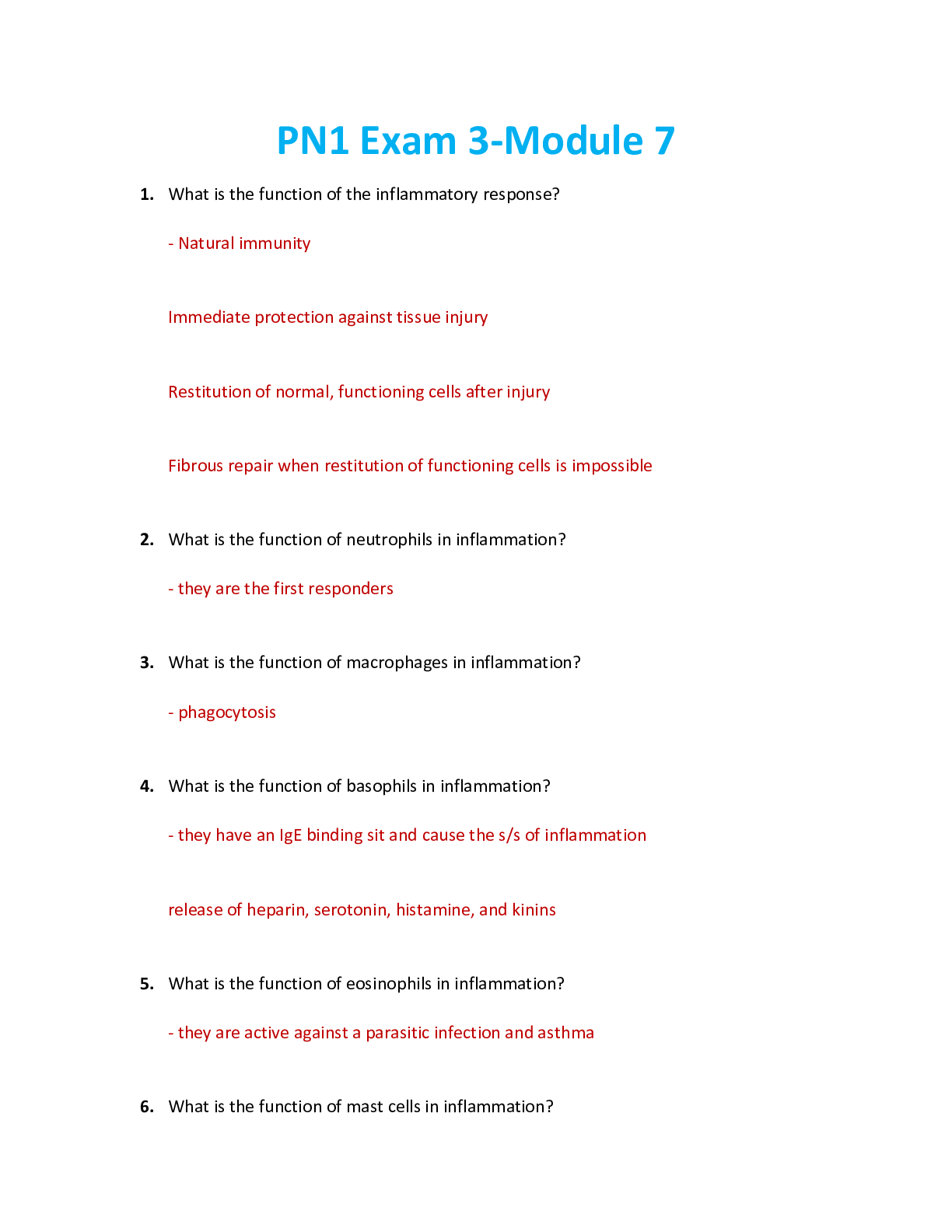
Document information
Connected school, study & course
About the document
Uploaded On
Nov 30, 2020
Number of pages
18
Written in
Additional information
This document has been written for:
Uploaded
Nov 30, 2020
Downloads
3
Views
152












x.png)
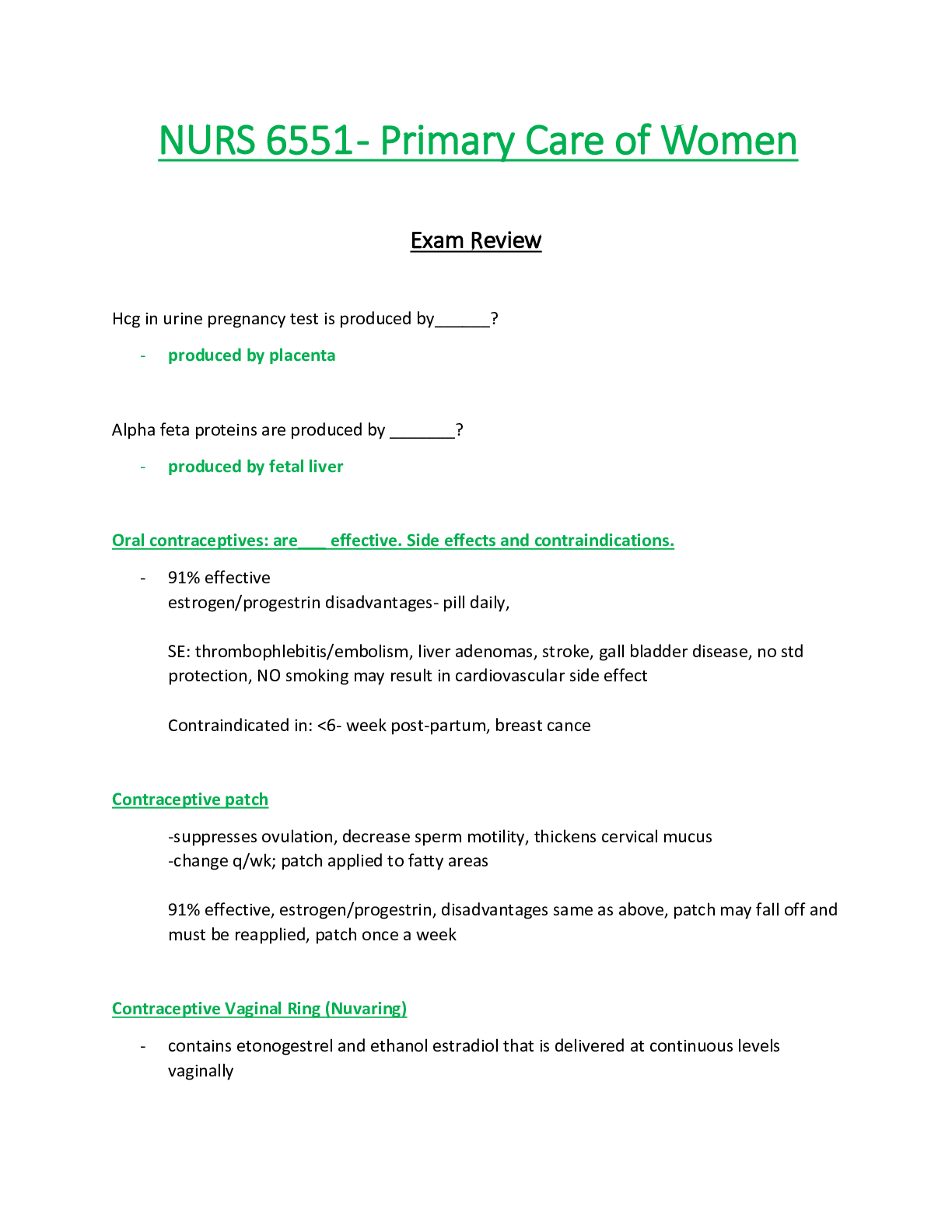

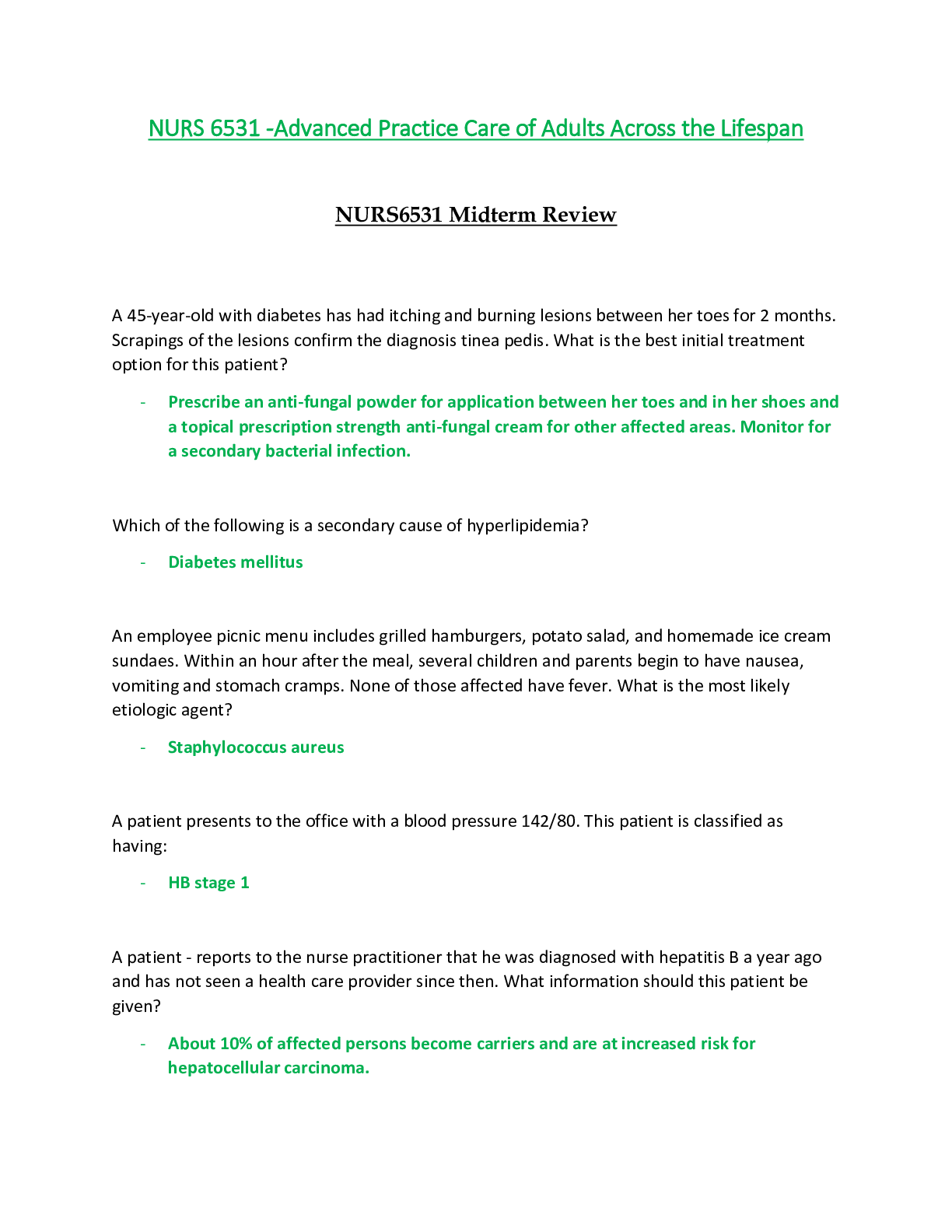

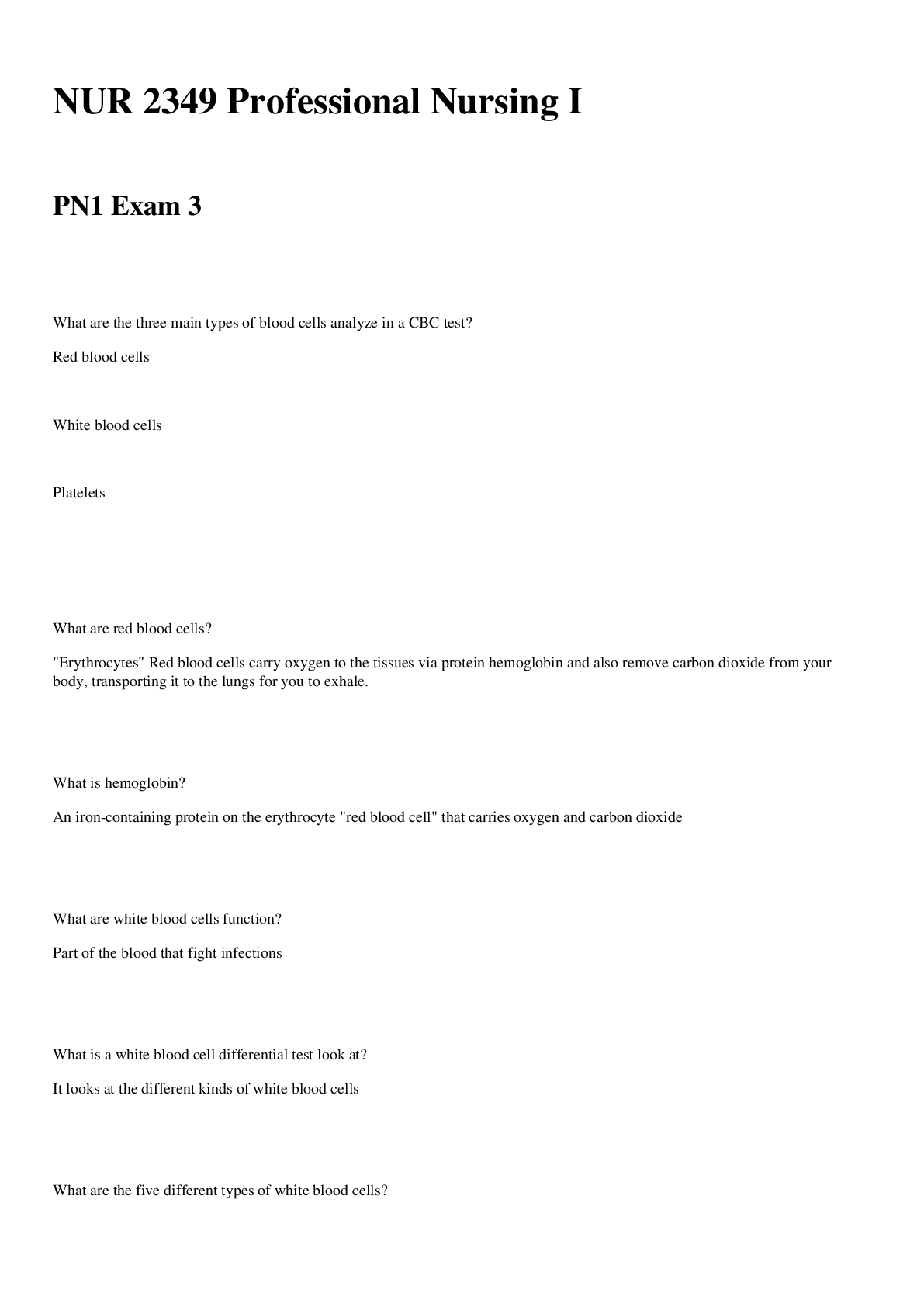

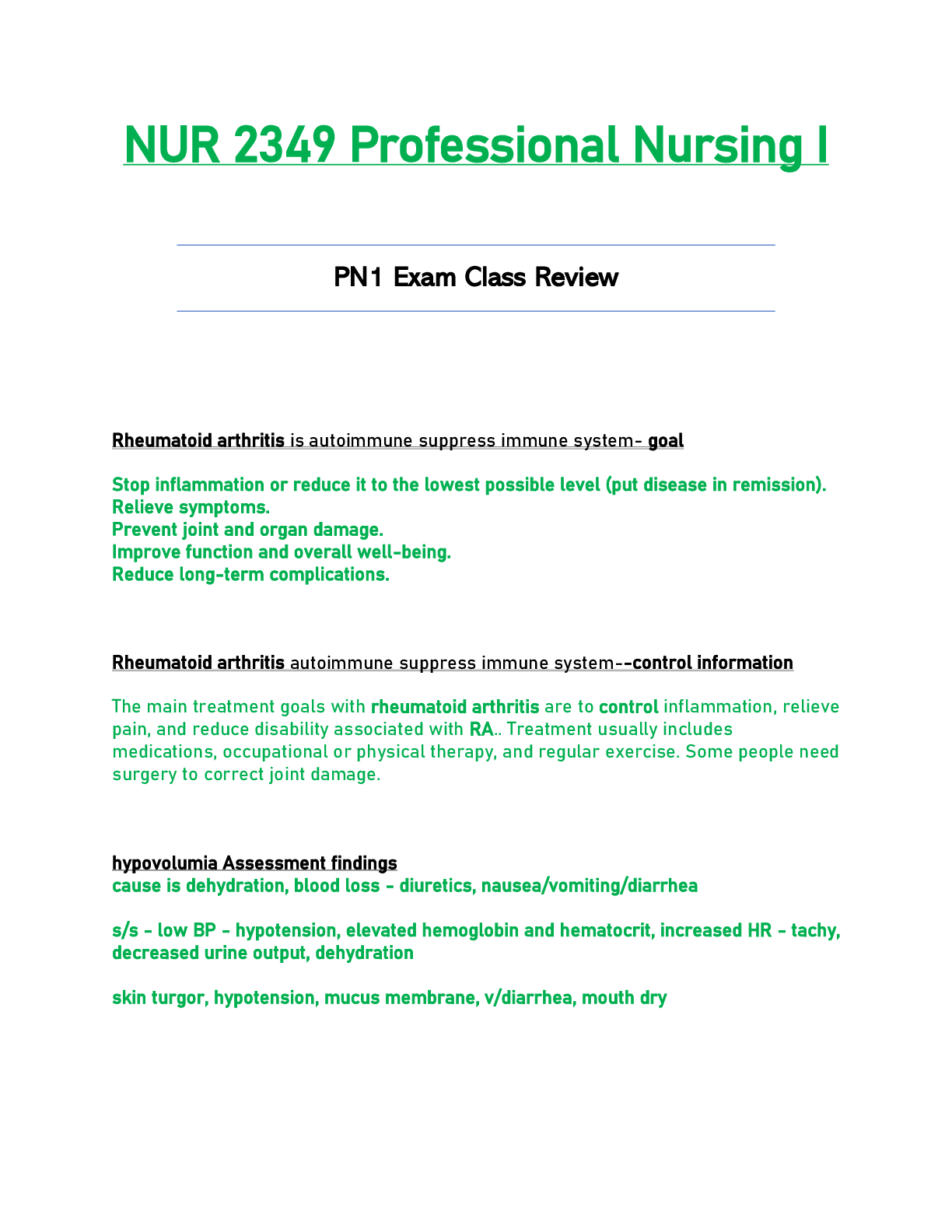
.png)



